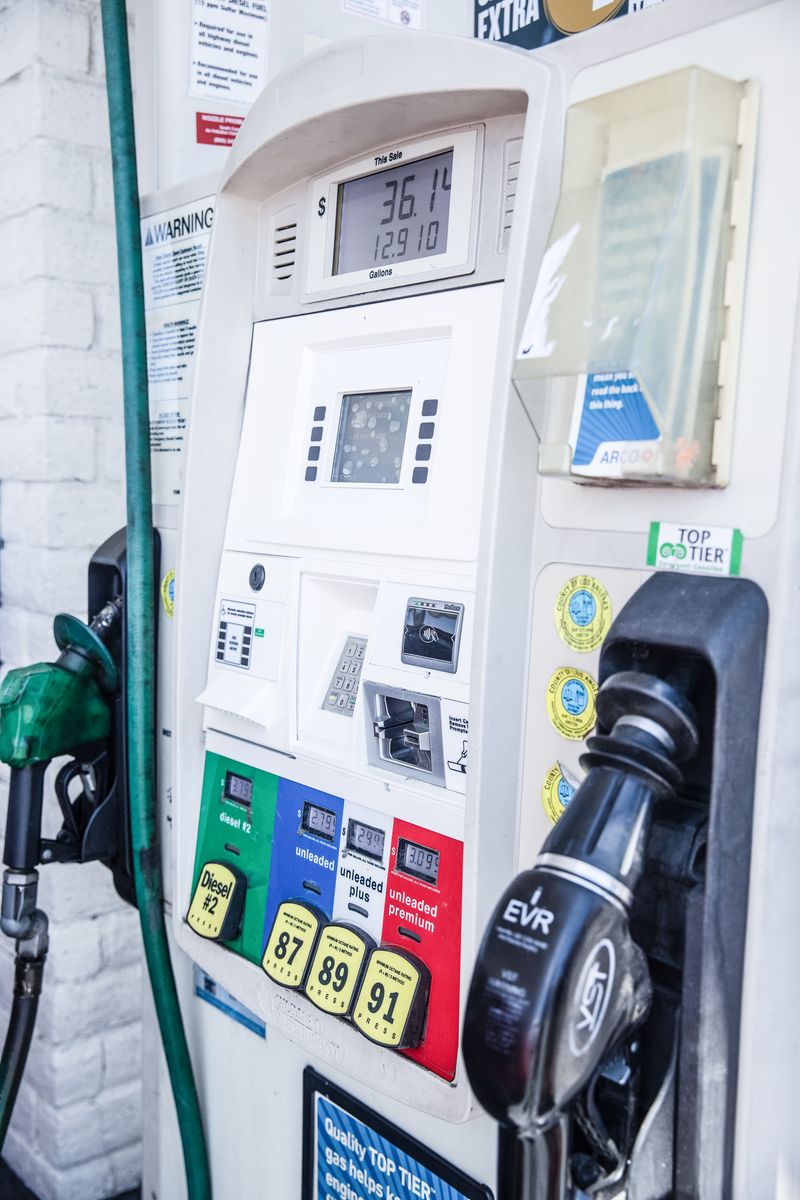The Rising Cost of Gasoline: A Perfect Storm of Factors
Gas prices in the United States have been steadily increasing in recent weeks, with the national average for a gallon of regular gasoline reaching $3.82. This is an 11-cent increase from just a week ago and nearly 30 cents higher than a month ago. While these prices are still lower than they were a year ago when the national average reached $4.16, the upward trend raises concerns about the impact on consumers and the broader economy.
The Role of High Temperatures and Reduced Refinery Production
One of the key factors contributing to the recent spike in gas prices is the impact of high temperatures on refinery production. As temperatures soar, refineries face challenges in maintaining normal production rates. The process of refining crude oil into gasoline, jet fuel, and diesel fuel requires cooling the oil at various stages. The hotter it is outside, the harder it becomes to cool the oil and keep the equipment running efficiently. This leads to reduced production and a decrease in gasoline and diesel supply on the market.
This issue is not limited to the United States. Refineries in Southern Europe, Greece, and Italy have also experienced disruptions due to hot weather. When these refineries process less crude oil, it means less gasoline is available for export to the United States, further limiting supply and putting upward pressure on gas prices.
In addition to the impact of hot weather, several refineries across the Gulf, East, and West Coasts have experienced unscheduled outages, exacerbating supply constraints. Some refineries also rely on local utilities for electricity, and if these utilities face outages, it can result in power loss for the refineries, further affecting gasoline and diesel supply.
Supply Issues and Increased Demand
The supply issues in the gasoline market are not showing signs of improvement, and at the same time, demand for gasoline is on the rise. According to the Energy Information Administration (EIA), gasoline demand is up 3% compared to the previous year. This increase in demand can be attributed to a combination of factors, including an improving economy, a return to pre-pandemic travel patterns, and an increase in consumer activities requiring transportation.
The Global Context: OPEC+ Production Cuts and Disputes Impact Oil Supply
Adding to the complexities of the gasoline market, global factors are also contributing to the rise in gas prices. Since October 2022, OPEC+ has implemented significant production cuts, reducing daily output by more than 5 million barrels. These cuts impact the availability of crude oil, which directly affects the price of gasoline. Additionally, disputes between the Kurds and the Turkish government have led to the removal of 450,000 barrels per day of Kurdish oil from the market, further impacting oil supply.
Evaluating Government Policies and Environmental Regulations
The current situation with rising gas prices raises questions about the role of government policies and environmental regulations in shaping energy markets. While factors such as high temperatures and global supply dynamics are largely outside the control of any individual government, policymakers can influence the energy landscape through regulations and investments in alternative fuels and renewable energy sources.
Some critics may argue that stringent environmental regulations and a push for renewable energy are contributing to the current spike in gas prices. However, it is essential to consider the long-term benefits of transitioning to cleaner energy sources. The global oil market is highly volatile, and dependence on fossil fuels exposes economies to price fluctuations and supply disruptions. Investing in renewable energy and reducing reliance on fossil fuels can provide stability, reduce greenhouse gas emissions, and create new job opportunities in the clean energy sector.
Furthermore, it is crucial to recognize that the rising cost of gas is not solely a result of environmental policies. It is a multifaceted issue influenced by various factors, including global events, market dynamics, and unexpected disruptions. Blaming environmental regulations alone oversimplifies the complexity of the situation and undermines the broader need for sustainable energy practices.
Navigating the Impact on Consumers and the Economy
As gas prices continue to rise, it is understandable that consumers and businesses are concerned about the implications for their budgets and the broader economy. Higher gas prices directly impact transportation costs, which can affect the profitability of businesses and increase expenses for individuals. Furthermore, the ripple effect of higher energy costs can lead to increased prices for other goods and services.
While there is no immediate fix to lower gas prices, there are strategies that individuals and businesses can adopt to mitigate the impact. Carpooling, using public transportation, or driving fuel-efficient vehicles can help reduce gas consumption and expenses. Businesses can explore opportunities to optimize transportation logistics and find ways to minimize the impact of higher energy costs.
From a policy standpoint, governments can consider measures to alleviate the burden on consumers and businesses. This may include targeted tax credits or incentives to promote energy efficiency and the adoption of cleaner technologies. Additionally, investments in public transportation infrastructure and alternative fueling options can help diversify energy sources and reduce reliance on gasoline.
Conclusion
The recent increase in gas prices highlights the intricate web of factors that shape the energy market. While high temperatures, supply constraints, and global dynamics contribute to the rising cost of gasoline, it is important to approach the issue holistically. Government policies and regulations play a role in shaping energy markets, focusing on long-term sustainability and diversification of energy sources. Individuals and businesses can adopt strategies to lessen the impact of higher gas prices, while policymakers should consider targeted measures to support consumers and promote energy efficiency. By addressing the complexities of the situation, we can navigate the challenges posed by rising gas prices and move towards a more sustainable energy future.

<< photo by Ekaterina Belinskaya >>
The image is for illustrative purposes only and does not depict the actual situation.
You might want to read !
- Exploring the Factors Behind Soaring Gas Prices
- “Are We Heading Towards Another Financial Crisis? Exploring the Nasdaq’s Recent Plunge”
- “The Impact of Yellow Trucking Firm’s Massive Layoffs on the US Economy”
- “Analyzing the Impact: Rising Gas Prices Surge to Highest Level Since November”
- Insightful Analysis: Unveiling the Potential of Celtics’ Second-Round Pick Jordan Walsh
- Climate Change Implications: How Canada is Being Affected by the “Era of Global Boiling”
- The Electric Revolution Takes Flight: US Approves World’s First Fully Electric Flying Car




